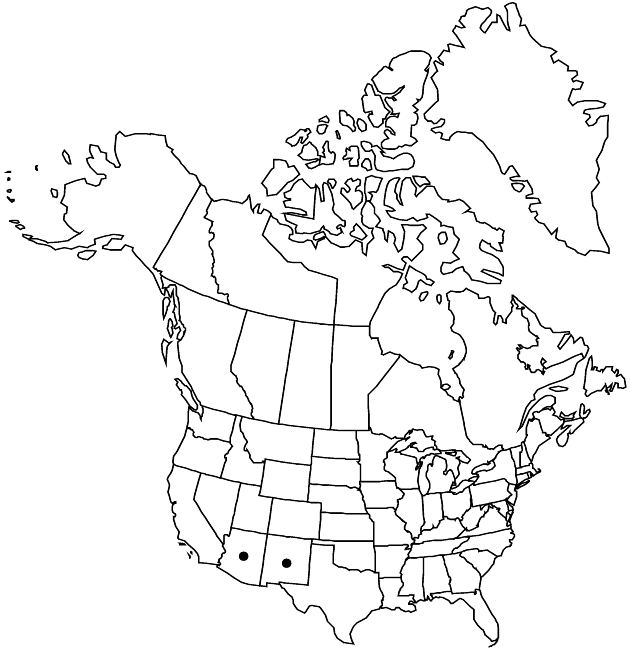Bahia biternata
Smithsonian Contr. Knowl. 5(6): 95. 1853.
Endemic
Revision as of 23:01, 29 July 2020 by imported>Volume Importer
Annuals, 8–40+ cm. Stems mostly erect. Leaves all or mostly alternate (proximal sometimes opposite); blades simple or 1–2-ternately lobed, lobes filiform to linear, 5–12 (–25+) × 0.5–1.5 (–3+) mm, faces sparsely scabrellous, usually glanddotted as well. Involucres 3–4+ × 6–9+ mm. Ray-florets 8–13+; corolla laminae 3–4 (–10+) mm. Disc-florets 30–60+; corollas 2.5–3.5 mm. Cypselae 2–3+ mm, faces ± hirtellous; pappi of (outer cypselae) ± ovate to quadrate, apically ± muticous scales 0.5–1 mm or (innermost cypselae) lanceolate to lance-subulate, apically ± aristate scales 1–2.5 mm.
Phenology: Flowering (May–)Sep–Oct.
Habitat: Granite outcrops
Elevation: 1200–1600 m
Discussion
Selected References
None.
Lower Taxa
None.
... more about "Bahia biternata"
introrse +
connate +
herbaceous +
scarious +
absent +
hirsute +
papillate +
corymbiform +
continuous +
decurrent +
simple +
lobed +
winged;ribbed;winged;ribbed +
1;15 +
stigmatic +
6;80 +
absent +
zygomorphic +
yellow +
monomorphic +
dimorphic +
2mm;3mm +
staminate +
straight +
hirtellous +
scabrellous +
distinct +
proximal +
1;5 +
bisexual +
dispersed +
singly +
discoid +
indeterminate +
surrounding +
hemispheric +
alternate +
cauline +
2-carpellate +
inferior +
attached +
anatropous +
persistent +
fragile +
falling +
thickened +
tough +
thick +
absent +
connate +
persistent +
distinct +
falling +
unequal +
Smithsonian Contr. Knowl. +
1853 +
pistillate +
absent +
fertile +
epaleate +
pitted +
knobby;convex +
fibrous +
distinct +
scarious +
exalbuminous +
modifed +
1;2 +
Endemic +
alternate +
branched +
erect +
2-branched +
papillate +
Bahia biternata +
Bahia +
species +
shorter +
longer +
annual +
